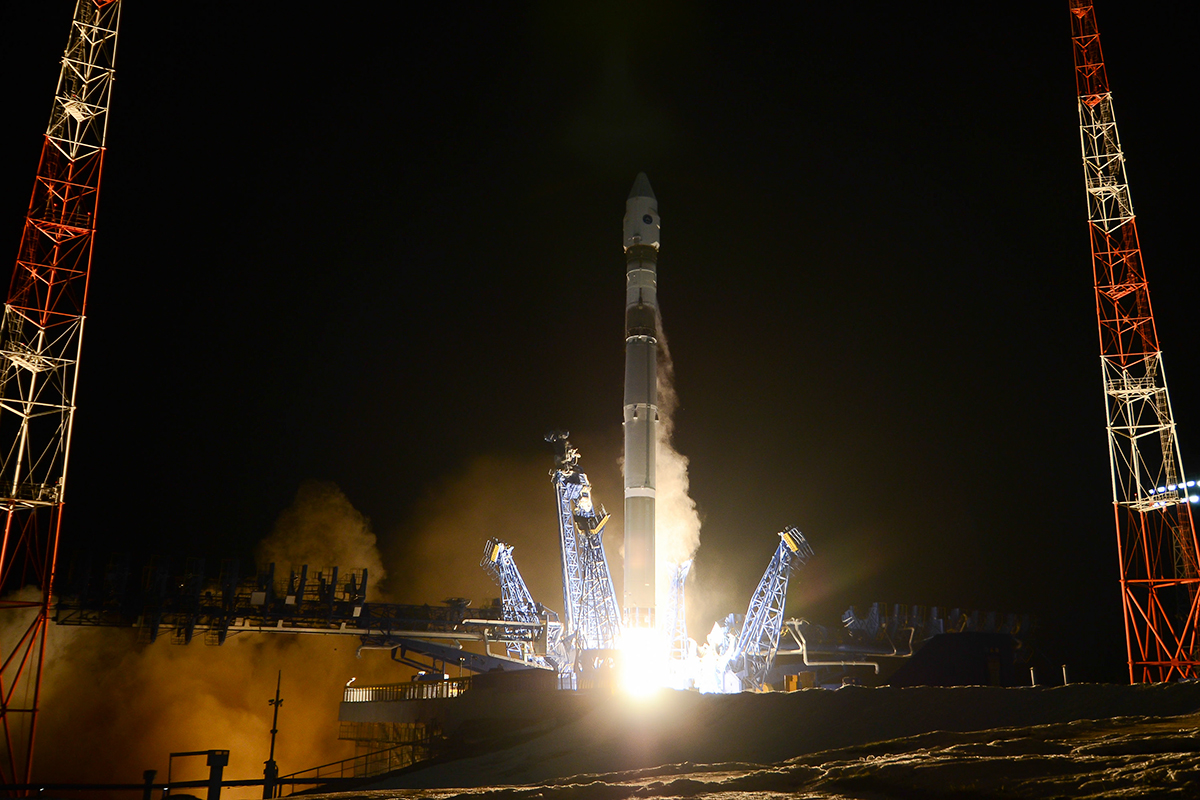Russia tests anti-satellite missile and the US Space Force is not happy
"Russia's DA-ASAT test provides yet another example that the threats to U.S. and allied space systems are real, serious and growing."

Russia just fired an anti-satellite missile in a test of technology that the U.S. Space Force considers a threat to American orbital assets.
Yesterday (April 15), Russia conducted a test of its direct-ascent anti-satellite (DA-ASAT) missile system, which is designed to destroy satellites in low Earth orbit.
This test followed the country's on-orbit test maneuvers of two satellites that "exhibited characteristics of a space weapon," COSMOS 2542 and COSMOS 2543, which the U.S. has been closely following, the U.S. Space Force said in a statement yesterday. In February, the U.S. Space Force spotted these Russian satellites following a U.S. spy satellite, behavior that Space Force commander Gen. John "Jay" Raymond described at the time as "unusual and disturbing."
Video: Watch Russia launch the two mysterious satellites
Related: Declassified US spy satellite photos & designs
The U.S. Space Force also has serious concerns about this recent DA-ASAT missile test. "Russia's DA-ASAT test provides yet another example that the threats to U.S. and allied space systems are real, serious and growing," Raymond said in yesterday's statement. "The United States is ready and committed to deterring aggression and defending the nation, our allies and U.S. interests from hostile acts in space."
"This test is further proof of Russia's hypocritical advocacy of outer space arms control proposals designed to restrict the capabilities of the United States while clearly having no intention of halting their counterspace weapons programs," Raymond added. "Space is critical to all nations and our way of life. The demands on space systems continue in this time of crisis where global logistics, transportation and communication are key to defeating the COVID-19 pandemic."
"It is a shared interest and responsibility of all spacefaring nations to create safe, stable and operationally sustainable conditions for space activities, including commercial, civil and national security activities," he said.
Get the Space.com Newsletter
Breaking space news, the latest updates on rocket launches, skywatching events and more!

In February, when the two Russian satellites were seen seemingly "stalking" a U.S. spysat, it was the first time in history that the U.S. military publicly revealed an identified, direct threat from another country to a U.S. satellite. Yesterday's test, as described by Raymond, is another threat to U.S. space systems and resources in low Earth orbit.
However, anti-satellite weapons have also posed an indirect threat to U.S. satellites, because orbital debris, or "space junk," from damaged and destroyed spacecraft could collide with other satellites in orbit. For example, India launched an anti-satellite test in March 2019 that created at least 60 large pieces of orbital debris that NASA said could have potentially hit the International Space Station, putting astronauts' lives at risk.
The Space Force, which was allocated $15.4 billion in the Trump administration's 2021 budget proposal, was created in part to protect such resources. Satellites and technology in low Earth orbit have become increasingly more valuable as tech advances and as countries increasingly adopt space technologies for national security purposes.
This has become especially pertinent for the U.S. as both Russia and China continue to advance their space programs and capabilities in low Earth orbit. Additionally, these actions by Russia could add to political tensions that were already building between Russia and the U.S. because of allegations that Russia interfered in the 2016 U.S. presidential election.
In addition, Russian officials continue to trumpet the development of advanced, potentially threatening military technology, including a hypersonic weapon and a 100-megaton nuclear torpedo.
- The most dangerous space weapons ever
- Will the US be able to stop Russia's new arsenal of missile defense-piercing nukes?
- Launch photos: US spy satellite NROL-71 soars on secret mission
Follow Chelsea Gohd on Twitter @chelsea_gohd. Follow us on Twitter @Spacedotcom and on Facebook.
OFFER: Save 45% on 'All About Space' 'How it Works' and 'All About History'!
For a limited time, you can take out a digital subscription to any of our best-selling science magazines for just $2.38 per month, or 45% off the standard price for the first three months.
Join our Space Forums to keep talking space on the latest missions, night sky and more! And if you have a news tip, correction or comment, let us know at: community@space.com.

Chelsea “Foxanne” Gohd joined Space.com in 2018 and is now a Senior Writer, writing about everything from climate change to planetary science and human spaceflight in both articles and on-camera in videos. With a degree in Public Health and biological sciences, Chelsea has written and worked for institutions including the American Museum of Natural History, Scientific American, Discover Magazine Blog, Astronomy Magazine and Live Science. When not writing, editing or filming something space-y, Chelsea "Foxanne" Gohd is writing music and performing as Foxanne, even launching a song to space in 2021 with Inspiration4. You can follow her on Twitter @chelsea_gohd and @foxannemusic.
-
Geomartian Yikes, that Russia satellite was armed with a bottle of superglue to glue shut the solar shield covering the billion dollar optics of an American spy satellite. Space warfare is not even a step up from kindergarten pranks.Reply
There are literally hundreds of ways of disabling a satellite without turning it into a debris field.
Space War is an oxymoron when your “enemy” is your technological peer.
America has the most “toys” in space and it needs to learn how to play nice. -
danieldel And to think' not that long ago the American position was that space would be a place for peaceful scientific purposes and advances!Reply -
COLGeek Now the little green men will have to step carefully around the (more) debris before beginning the invasion...Reply
👽👾👽👾👽 -
SpaceEnthusiast Space kind of protects itself. No one wants to loose access to it and the only way to have acces to it is peacefully. Any belicose action by anyone would close space to everyone including the aggressor. There is no way to limit space use to the good guys only. The bad guys know that it is a glass house situation. You cannot throw a rock if you have a glass house. So no one will limit space use up there, it would be limited here on earth by sanctions, etc. The only problem up there would be Corona virus type of attacks, invisible and hard to track to the source attacks.Reply










